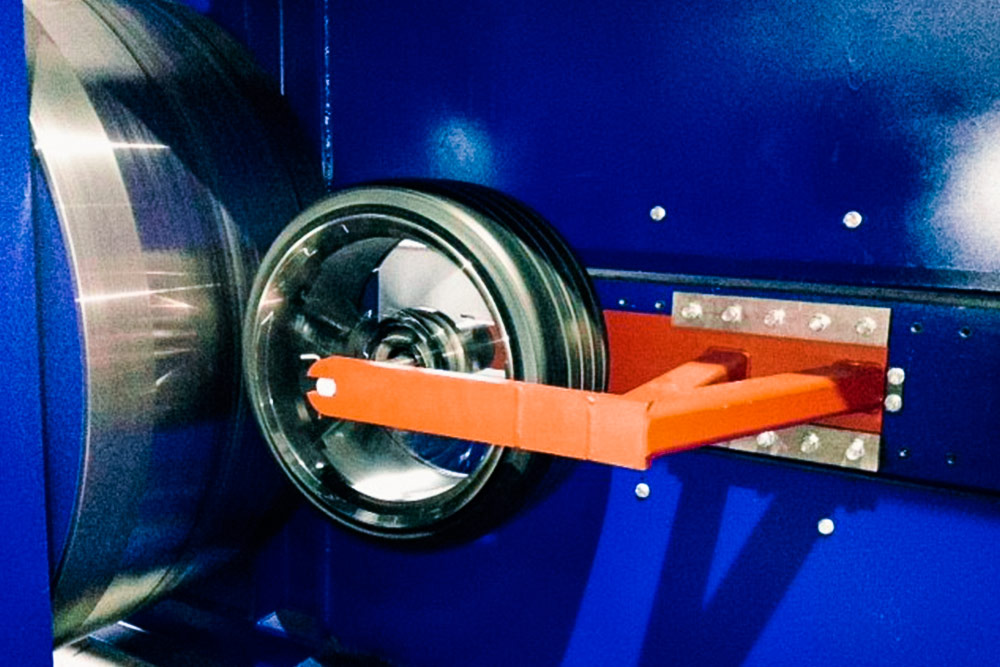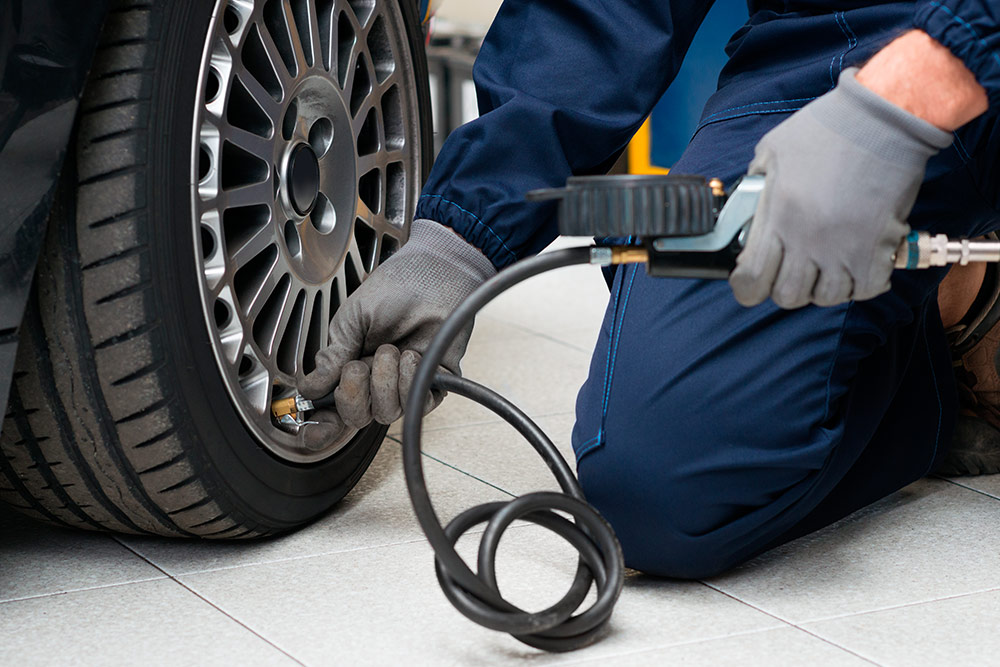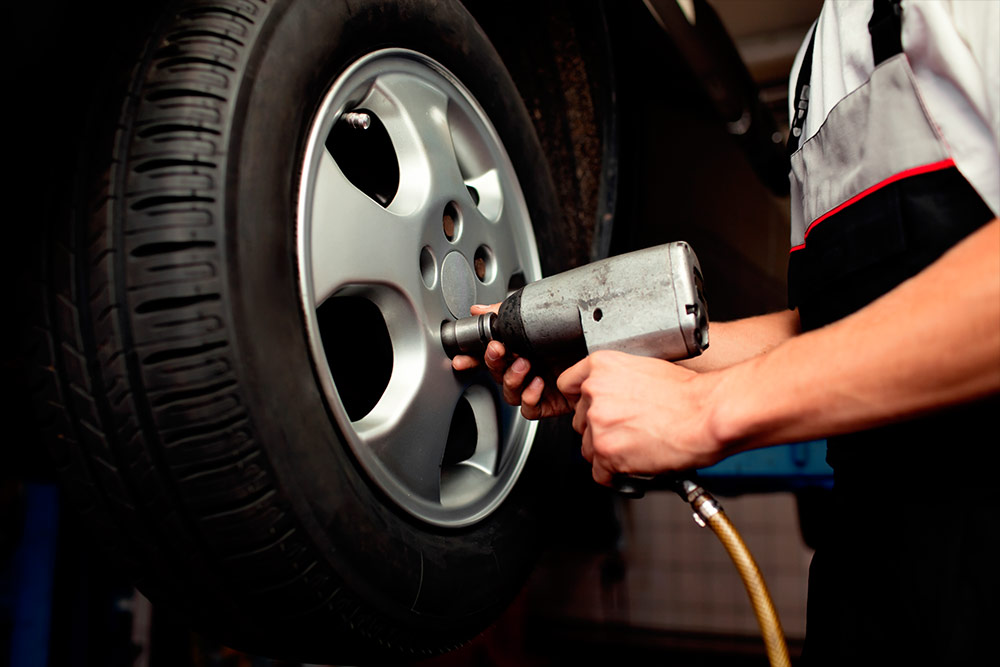High quality - assured safety
Last but not the least, this type of constant safety and quality control supports not only the users but also the manufacturer during compliance with a high manufacturing and production quality. Compared to existing competitors, “King Meiler” thus stands correspondingly aloof.
The customer benefits from this in any case. All tyres retreaded by “King Meiler” ensure a high standard of maximum safety thanks to most rigorous quality check. Well informed customers are not left out in the cold, because all tests have been carried out by independent and objective test laboratories.
The basic for the test for obtaining the TÜV Nord quality seal is ECE standard 108. Furthermore, 40 tests are carried out each year. The radial run-out may not exceed the maximum 1.5 millimetres and the lateral run-out may not exceed the maximum 1.2 millimetres. The use of special rubber compounds is controlled for various seasonal weather conditions. All products are subject to incoming goods inspection. Company visits for supervising the production on site ensure the compliance with the requirements.
“King-Meiler” would never be successful on the market for this long, if your manufacturer relied on one inspection centre only. Together with the test laboratory Nord, another institute continuously supervises the value of retreaded tyres coming out of the production of Reifen Hinghaus GmbH. In this way, “King Meiler” tyres are subject not only to the ECE inspection required by KBA (applying 50% more load than predefined) but also to additional 100 minutes of testing at the maximum speed. Only the tyres with enormous safety reserves can stand this test.
The “Test Laboratory Nord”, which is specialised for testing the tyres, confirm with their certificates the high quality of “King-Meiler” tyres, accompanied by significant safety reserves. Accordingly, retreaded tyres processed by Reifen Hinghaus GmbH may also carry a quality seal “Approved High Quality Tires” of the "Prüflabor Nord" [gist translation: Test Laboratory North]. The tyre retreading production currently works on introduction another quality management system, “ISO 9001:2015”, the certification of which will soon be provided.
Safety. Comfort.
Who voluntarily subjects itself to such test series and the results thereof, can with clear conscience offer a 2-year warranty for its products, which makes the factory retreaded “King Meiler” tyres in no way inferior to new tyres and better than may competitors.
Rubber compounds are one of the most important factors in tyre production. People working with Reifen Hinghaus GmbH have been aware of this fact for a long time now and collaborating with the listed companies which are leaders on the world market in the fields of research and development in development of technical rubber: Lanxess
In collaboration with representatives of a university-assisted research project, Reifen Hinghaus GmbH supports the entire team and the scientific advisers from the community with its own expertise in the search for a brand new type of stabilisation. Within this research and development project, new methods and ways are implemented, i.e. the most recently developed technologies and materials are combined into a tyre design which is not only fundamentally different, but also possess in particular the superior properties of so-called transverse friction.
In brief, it pertains to the way in which a tyre resists the extreme strain during lateral acceleration. To illustrate, just imagine how the weight of the vehicle acts on the rubber of the tyre flange due to centrifugal forces generated in curves - by the way a major weak point in particular in poorly made tyres
Whether in grass track races “MaxSport” or Drifters: These drivers make decent steam with (the aid of) “King Meiler” retreaded tyres.
The correct selection of the adequate air pressure in the tyres is the alpha and omega.
While people in this country mainly use many stations along the motorway to collect fees, other European countries are way ahead of us in this respect. In some countries, information panels are used to provide safety-relevant notifications. “Check the air pressure by all means at least once a month”, they say.
And our recommendation does not differ: Check the air pressure in all tyres at regular intervals. Do you know the results of tests with different pressure conditions in the tyres? When the air pressure is low, increased fuel consumption is just one of many consequences. Far greater dangers occur during acceleration, braking and handling in curves. The tyres “work” constantly against their rims during driving, and thus represents the connection between you and the street. The weight placed on them changes dramatically in curves and is distributed to the respective side.
Incorrect air pressure can cause quite the opposite and consequently, the “slipper flies away”of the rim when in curves or gets out of the place during hard braking.
The consequences could be fatal. Prevent this and take care about your tyres in the same way you take care of your own self. Who want to go out in bad shoes?
In the same way, mounting the retreaded tyres on your vehicle is also important. The best you can do is have the specialists fit the tyres from the very start onwards.
These low extra costs protect you from serious faults and keep you on the safe side in case of a potential warranty case.
Many questions have been asked about optimal warehousing when the summer tyres are having their winter sleep and the strong winter tyres are mounted. Clear recommendation in this case says: warehouse depressurised tyres, so that they are not under strain.
The best way is to distribute the load naturally along the tyre flanks when the tyre is still fitted to the rim. Who uses summer and winter tyres on one and the same rim, can also store the tyres sidewards by placing a lot of cardboard between them, which would already protect the “temporarily parked” tyres.
It would be best if you store your tyres in professional warehouses at services stations in your neighbourhood, against a small fee. When the tyres are stored vertically, they should be rotated a bit at least once a month, in order to prevent generation of standing plates.
Mysterious numbers and letters on the tyres
Much information can be read on the flanks of retreaded tyres manufactured in accordance with ECE standards 108 and 109. But what this information actually mean?
| 0415 | With the aid of so-called DOT four-digit numbers, that have been in use since year 2000, one can find out the age of the product. The last 4 digits indicate the week and the year of manufacture. 4th week in year 2015 |
| 205/50 R 16 92V | The dimensions of the tyres are illustrated by combination of digits. |
| 205 | Nominal width of the tyre in millimetres |
| 50 | Ratio between the tyre height and tyre width in percent |
| R | Radial design |
| 16 | Rim diameter in inches |
| 92 | Load index, an encoded number indicating the maximum permissible tyre load |
| V | Speed index indicating the maximum permissible speed (here 240 km/h) which depends on the tyre load index and predefined conditions specified by the manufacturer. |






